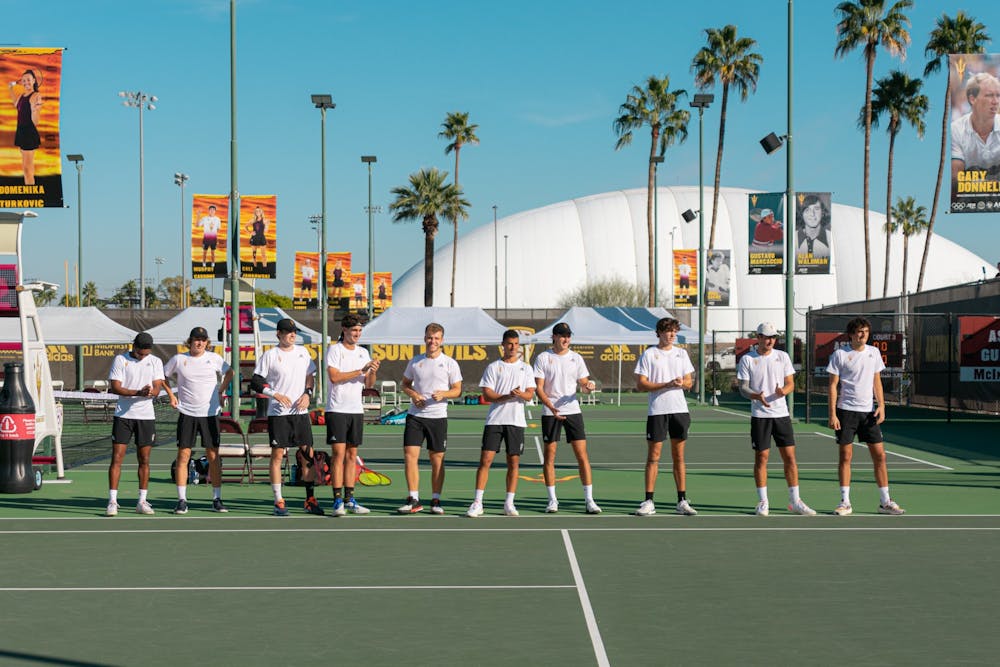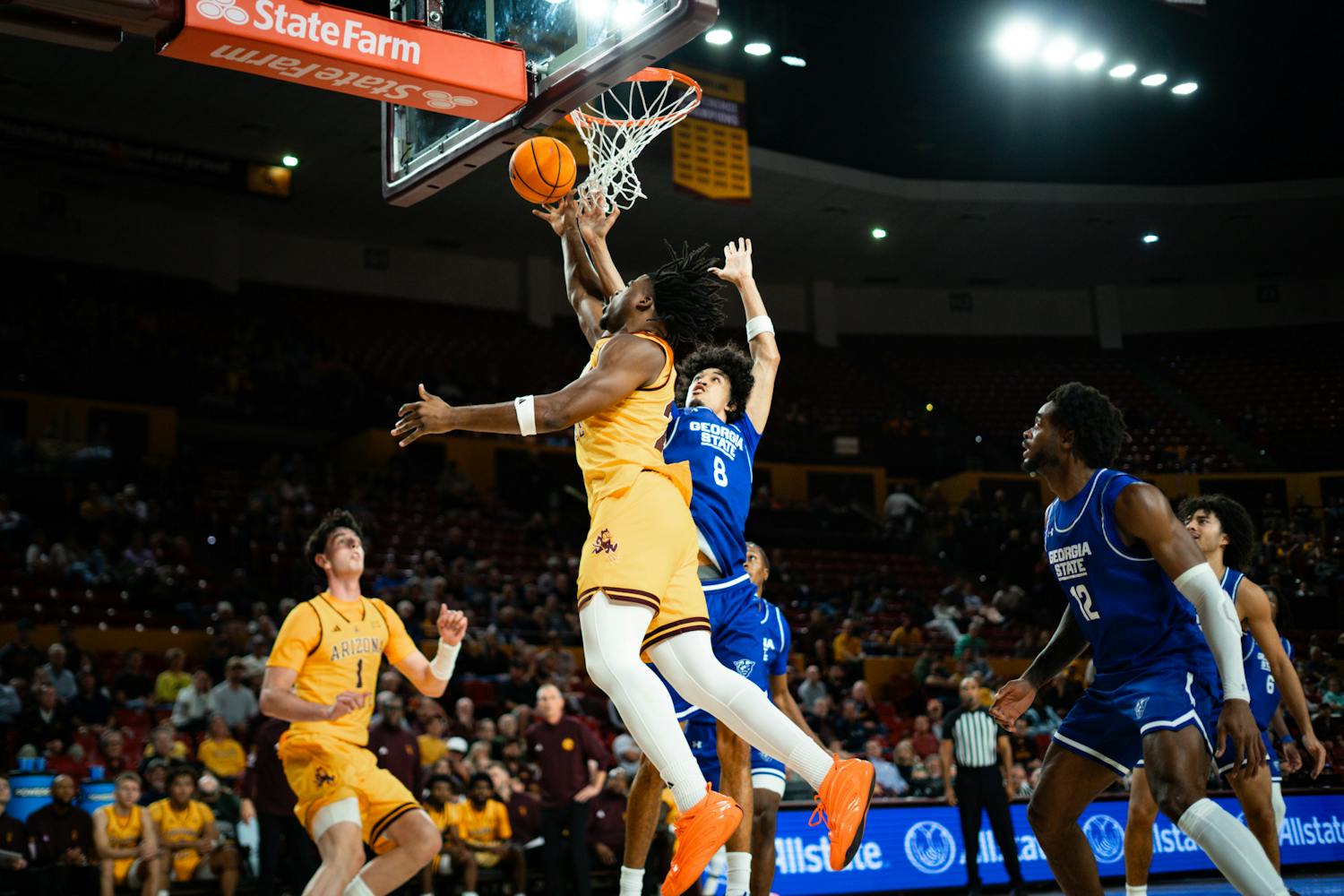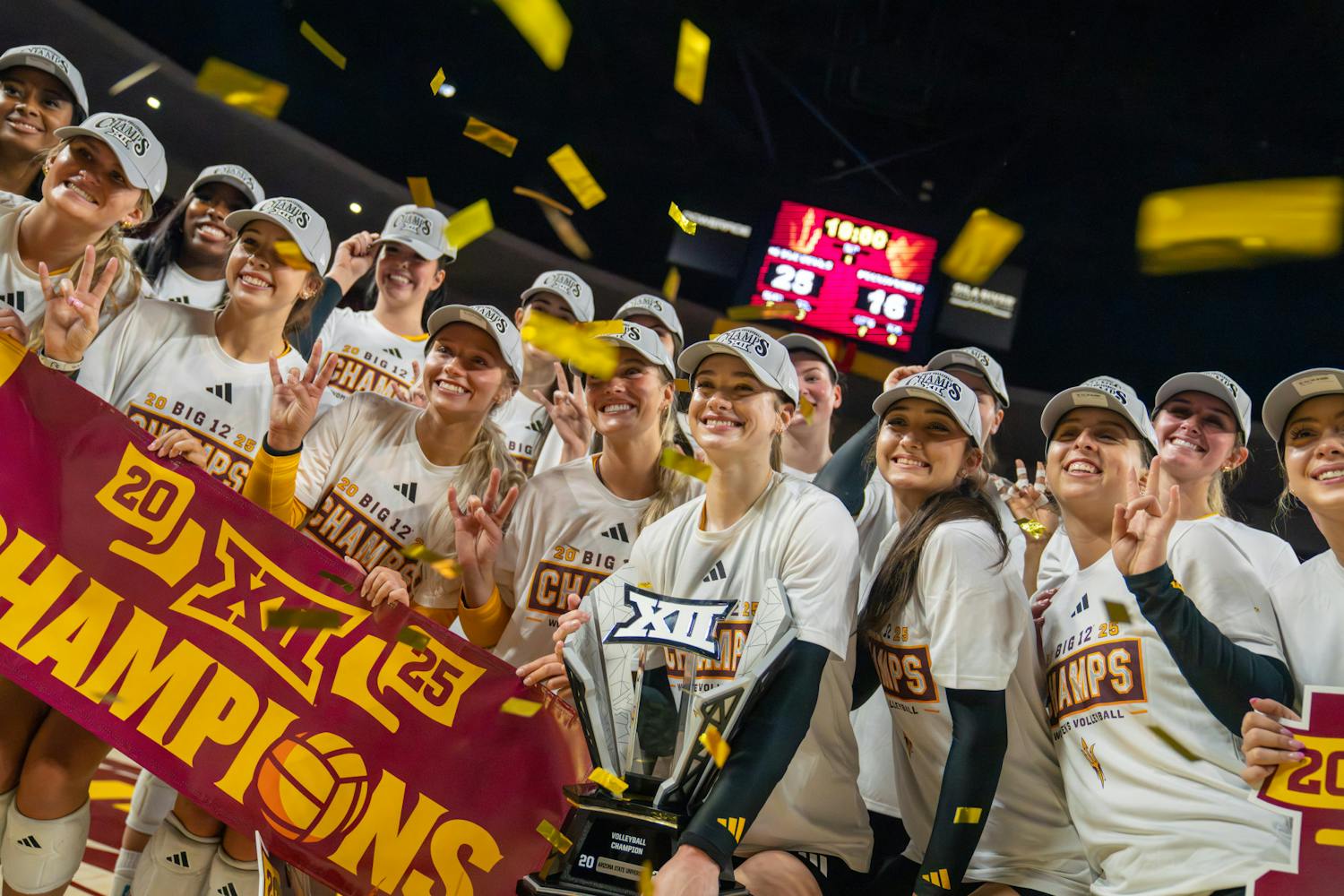In the history of the Power Five Conferences, no school had ever brought men's tennis back before, so when ASU's men's tennis program was discontinued in 2008, its future seemed nonexistent. Tennis wasn't coming back to Tempe.
But something changed in the hearts of former athletic director Ray Anderson and his wife, Buffie. In May 2016, they took a risk. Pooling together $1 million of their own money, the Andersons made the first efforts to bring men's tennis back.
Then began the search for further funds. Anderson called Mark King, the president of Adidas North America, about his idea. King donated $4 million of Adidas money not long after.
King and Anderson subsequently took their money to ASU President Michael Crow, who then blessed the reinstatement of the program.
But the Sun Devil men's tennis program was still merely an idea. Recollections of the glory days of men's tennis in Tempe that included names like Alan Waldman and Sargis Sargsian were about as real, if not more so, than the fragmented visions of a future men's tennis program.
If ASU was going to become a formidable program, they needed a leader.
Matt Hill was the head coach at USF when Anderson reached out to him. Anderson's motivations for reaching out to Hill were obvious; he'd already been part of three program turnarounds and was now leading USF's program to unprecedented success.
In the ten seasons before Hill's arrival, USF had only two NCAA Tournament appearances. Under Hill, they had three straight seasons with both NCAA Tournament appearances and AAC championship victories.
Hill had success in Florida, but his desire to coach at a Power Five school prevailed. Once he sat down to talk with Anderson, he was immediately convinced.
"I just loved the heart behind Ray's vision with the program, to bring it back and reconnect the tennis community to the men's tennis program and reconnect alumni back to the men's tennis program," Hill said. "His heart and vision were very much aligned for why I do what I do, so it was an easy decision."
Hill was hired on June 29, 2016, and given the proverbial keys to the kingdom. By fall 2017, he would have to construct a roster that was capable of competent play in the Pac-12 Conference.
Hill's first step was hiring an assistant coach. One month into the process, he hired Michal Kokta. Kokta was an assistant at Purdue who had previously coached and played for the Baylor Bears. According to Hill, he was a massive help in ASU's next step of the process — recruiting a team.
The challenge of recruiting a team from nothing can't be understated, especially considering ASU's circumstances. By the time the program was revitalized, all of the American recruits in the upcoming class had already committed to their respective schools. They didn't have a choice, international recruiting was the only option.
Still, it was incredibly difficult to convince players from around the world to come to ASU.
"You call a player, and they say, 'What are you ranked? Who's on the team?' and you're saying 'We're not ranked at all. We don't have a team. You'd be the first person,'" Hill said. "It's hard to get young men to buy into that."
Beyond the challenges of recruiting was also the crucial lack of feedback. Hill would sit in his office for days, brainstorming and casting his vision. He spent six months off the court during ASU's year in limbo after the team was reinstated.
Hill longed to return to the court. In his office, there were no opportunities to delve into his favorite aspects of coaching: developing players and connecting a community. Additionally, there were no markers for where the team was at. The entire program was surrounded by question marks.
But the program prevailed. Despite recruiting challenges, ASU put together the No. 5 ranked class in the country with names like Benjamin Hannestad and Michael Geerts.
Still, nobody knew what Sun Devil tennis was going to look like in its first season back.
So when men's tennis became ranked No. 13 in the country during their first season back, battling both No. 2 Stanford and No. 3 Ohio State to the match point, while clinching a spot in the NCAA tournament, fans in Tempe and followers of collegiate tennis weren't just surprised — they were astonished.
Hill attributes such early success to the recruiting class. According to Hill, if the program hadn't gotten off to such a hot start recruiting, things could have gone in a very different direction.
"We were super fortunate to get some amazing recruits right out of the gate," Hill said.
Since their first season, men's tennis has continued to be a formidable program. They've been .500 or better in all but two of their seasons since reinstatement. One of those seasons was an uncharacteristic down year for the program in 2022, while the other season, 2020, was canceled early due to COVID.
When looking at the early days of the program compared to now, there are a few key differences. Among them are improved culture, depth, recruiting options and fanbase presence.
According to Hill, the hardest piece of the puzzle when constructing a roster out of nothing was building a positive and continuous culture. Hill mainly attributes the lack of such culture before to roster turnover. The Sun Devils signed a lot of one to two-year players in their first couple of seasons, which made it difficult to sustain leadership and lay a foundation of culture.
"We're just hitting our stride when it comes to the culture component of the program," Hill said. "It took a few recruiting cycles to get to where we really wanted to be."
ASU's roster now is a lot less thin than it's been in the past. In early seasons, injuries to a player at the top of the lineup could significantly affect team outcomes. For example, when Hannestad got injured during the Sun Devils first season the team slipped in ITA rankings and never returned to its previous prowess. Just last year, they only had seven players on their roster.
That's not the case this season.
"We have ten players on this team that can compete in the lineup at any point and win against good teams," Hill said. "We didn't have that back then. We were still very young at the bottom and developing."
Part of the reason for that depth is ASU's enhanced recruiting options. When the program started, they could only draw quality international recruits with top American recruits out of the question. Now they have the best of both worlds.
"We have what we want now," Hill said. "We have a hybridized model of some of the best Americans meshed with some of the best foreigners. That’s always a great recipe for winning at a high level."
Senior Jacob Bullard, who has been with the team for almost three years, has seen a marked difference in the men's tennis fan base since he first arrived.
"People seem to be more involved with the program this year versus a couple of years ago," Bullard said. "Our fan base has grown a bit, and we have a lot of people supporting us. That's for sure been something that's changed since my first year here."
Now an associate head coach, Dominic Cotrone was hired as a volunteer assistant seven months after the program's reinstatement and has been an incredibly important asset. In his eyes, the biggest difference between now and the program's early days is obvious.
"The biggest thing that's changed now, as opposed to when I first got here, is the culture and identity of the program, of who we are as a team, and what other teams think about when they hear Arizona State tennis," Cotrone said. "That culture and identity is a lot more engrained now than it was in 2018."
The Sun Devils of men's tennis look back at their journey from reinstatement to now with fondness. They've come a long way — as far as a program can go. But, they're not satisfied. Past improvement doesn't indicate future success, and the Sun Devils have big goals moving forward.
"The goal is always to win our region of the United States, then take a shot at winning a national championship," Hill said. "We're moving in that direction."
Edited by Vinny DeAngelis, Alysa Horton and Caera Learmonth.
Reach the reporter at jwkartso@asu.edu and follow @kartsonis3 on X.
Like The State Press on Facebook and follow @statepress on X.
Jack is a sophomore studying sports journalism. This is his second semester with The State Press. He has also worked at other student journalism organizations.




